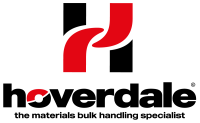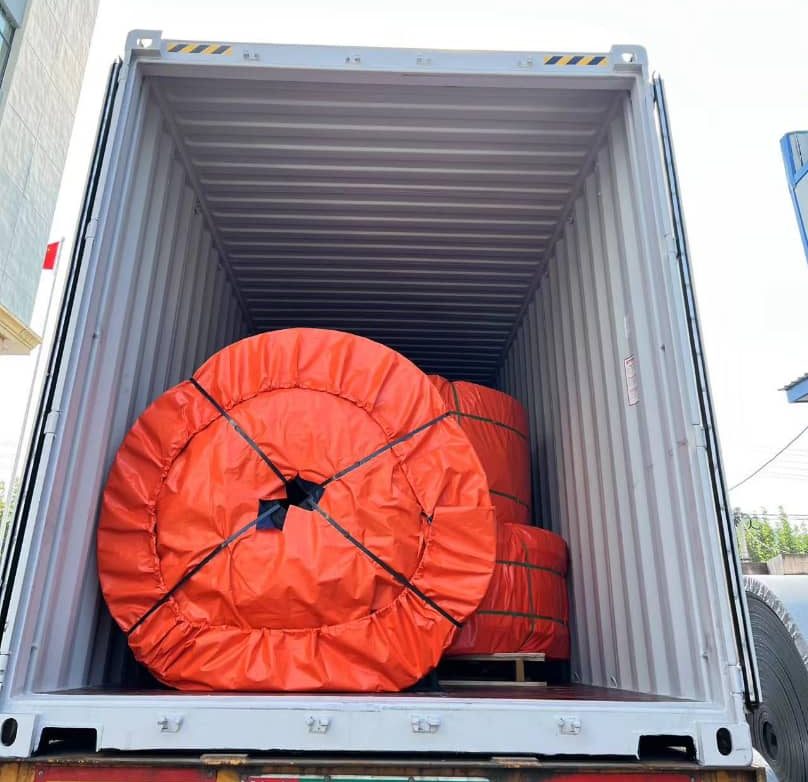Choosing the right conveyor belt for a materials recycling plant is crucial for efficient operations and equipment longevity. Conveyor belts come in various types, each designed for specific materials and operating conditions. The three primary types of belts used in recycling plants are chevron, cleated, and flat belts. Understanding their differences and applications will help you select the most suitable conveyor belt for your recycling plant.
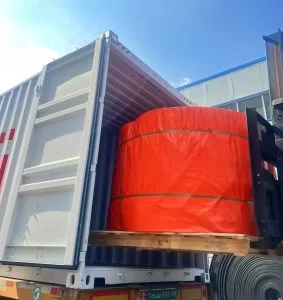
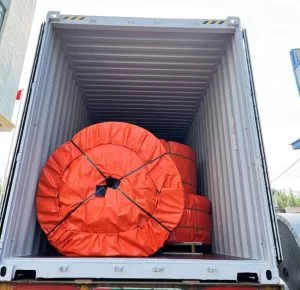
Chevron Belts
Characteristics:
Chevron conveyor belts are distinguished by the V-shaped pattern of cleats on their surface.
Depending on the application, these patterns can vary in height, width, and spacing.
Best Suited For:
- They are ideal for transporting bulk or packed materials on inclines and declines.
- The chevron pattern helps prevent the materials from sliding back.
- Particularly effective for materials like coal, minerals, sand, and gravel.
Advantages:
- It provides increased carrying capacity compared to flat belts.
- Prevents material spillage and slipping.
- Suitable for conveying materials at angles of up to 40 degrees.
Cleated Belts
Characteristics:
Cleated conveyor belts have raised sections (cleats) across their width, which are integral to the belt. The height, spacing, and type of cleat can be tailored to the specific material being transported.
Best Suited For:
- Designed for moving materials vertically or at high inclines.
- Excellent for materials that require gentle handling, such as recycled plastics, glass, or electronic scrap.
Advantages:
- Prevents material rollback on steep inclines.
- Helps in organising and separating materials during transport.
- Facilitates higher conveying speeds and efficient material handling.
Flat Belts
Characteristics:
Flat conveyor belts are the most traditional and common type. They feature a smooth, flat surface without any cleats or patterns.
Best Suited For:
- Ideal for transporting materials over short to medium distances on horizontal or slightly inclined paths.
- Suitable for various materials, including paper, cardboard, and light metals.
Advantages:
- Versatility in handling different types of materials.
- Lower maintenance requirements compared to patterned belts.
- It provides a stable and flat surface for materials, reducing spillage.
The choice of conveyor belt in a materials recycling plant depends on several factors, including the type of material, the incline of transport, and the need for material separation. Chevron and cleated belts are excellent for high-incline situations and preventing material rollback, while flat belts are versatile for general purposes.
Keep Conveyor Belts Clean and Moving
Understanding the specific needs of your recycling plant and the characteristics of the processed materials is key to selecting the most efficient and cost-effective conveyor belt system.
Maintaining clean conveyor belts, no matter which type, in MRFs is crucial for operational efficiency and the longevity of the belt system. In the fast-paced environment of a recycling plant, conveyor belts are subjected to a range of materials, some of which can be particularly abrasive or corrosive. Accumulation of these materials on the conveyor belt not only affects the belt’s lifespan but also impacts the efficiency of the recycling process.
The Dreaded Downtime
Firstly, debris and residual materials on conveyor belts can lead to increased wear and tear. This can cause premature belt degradation, leading to more frequent replacements and downtime for maintenance. Moreover, a dirty conveyor belt is more prone to slippage, which can reduce the belt’s efficiency and potentially cause disruptions in the material flow. This slippage not only slows down operations but also poses a safety risk to operatives.
Avoiding Contaminants
Another critical aspect is the impact on the quality of the recycled materials. Contaminants left on the belt can mix with other materials, leading to reduced purity of the separated elements. This contamination can decrease the overall quality of the recycled output, potentially reducing its market value or suitability for certain applications.
Damage Limitation
Clean belts are more accessible to inspect for wear and tear, allowing for timely maintenance actions to prevent more significant issues. Regular cleaning also prevents the buildup of materials that could damage the belt or the conveyor system.
In summary, the cleanliness of conveyor belts in a materials recycling plant is a significant factor in ensuring operational efficiency, safety, and the quality of the recycled product. Regular and thorough cleaning of conveyor belts is an essential practice for any materials recycling facility aiming for optimum performance and longevity of their equipment.
Request a FREE SITE SURVEY in the New Year
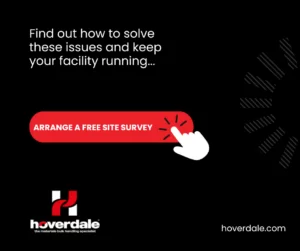

All our systems are designed and manufactured, Made in Britain and installed by our qualified Hoverdale Engineers. We offer a 100% money-back guarantee that we will solve the issues and commit after-sales and technical support for ongoing system performance.
